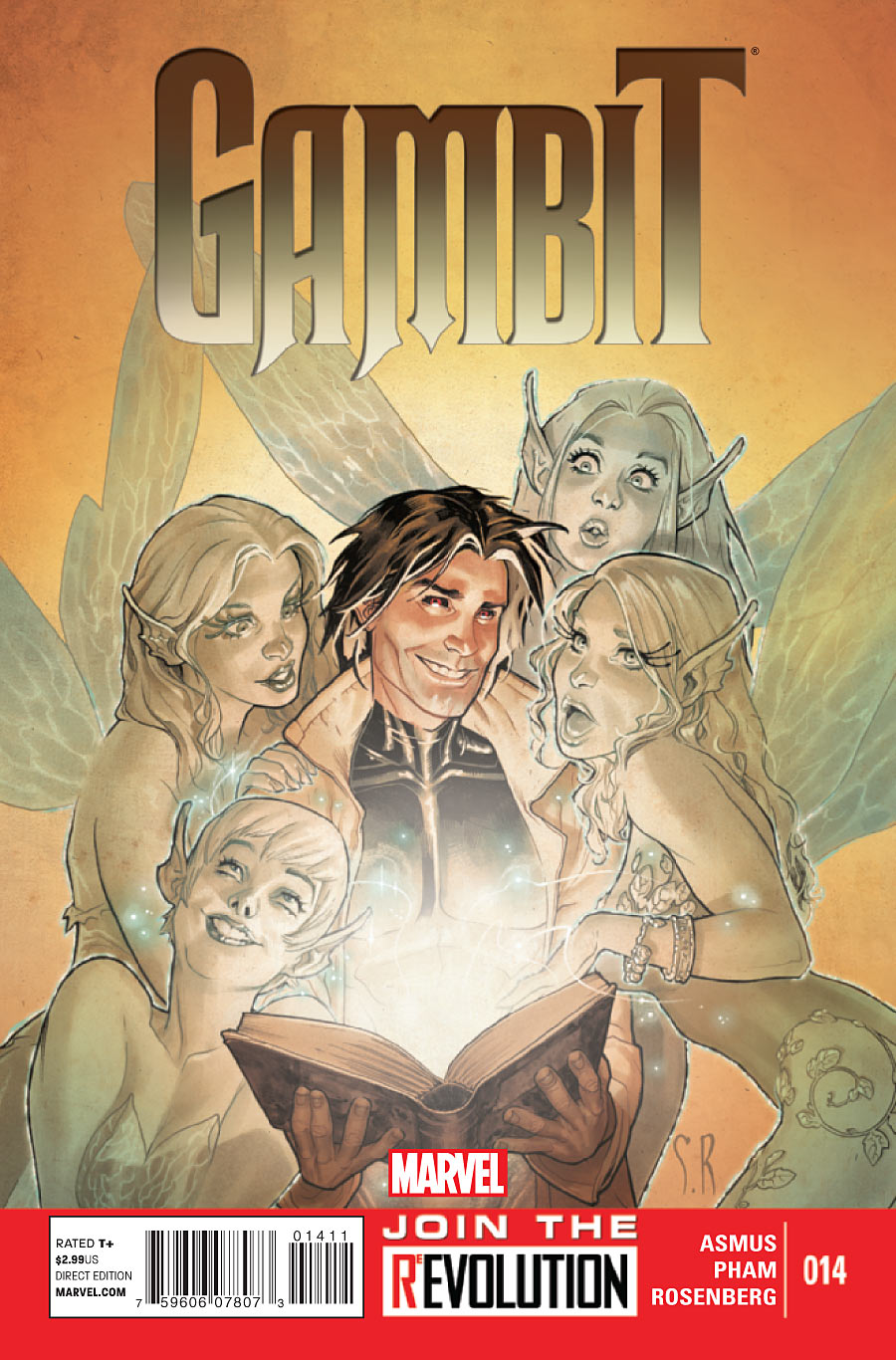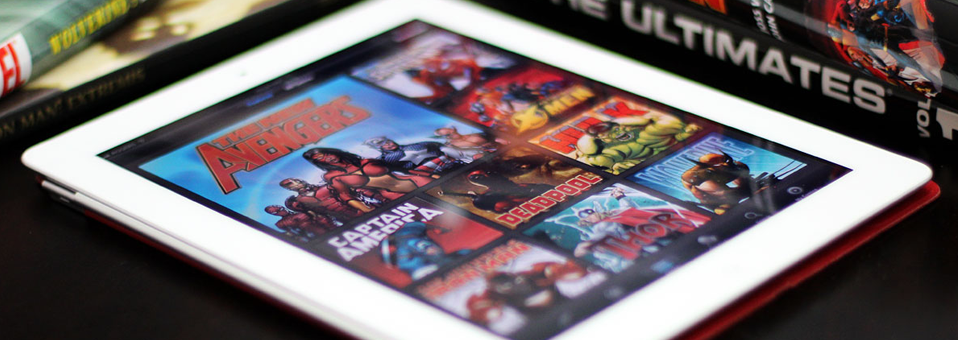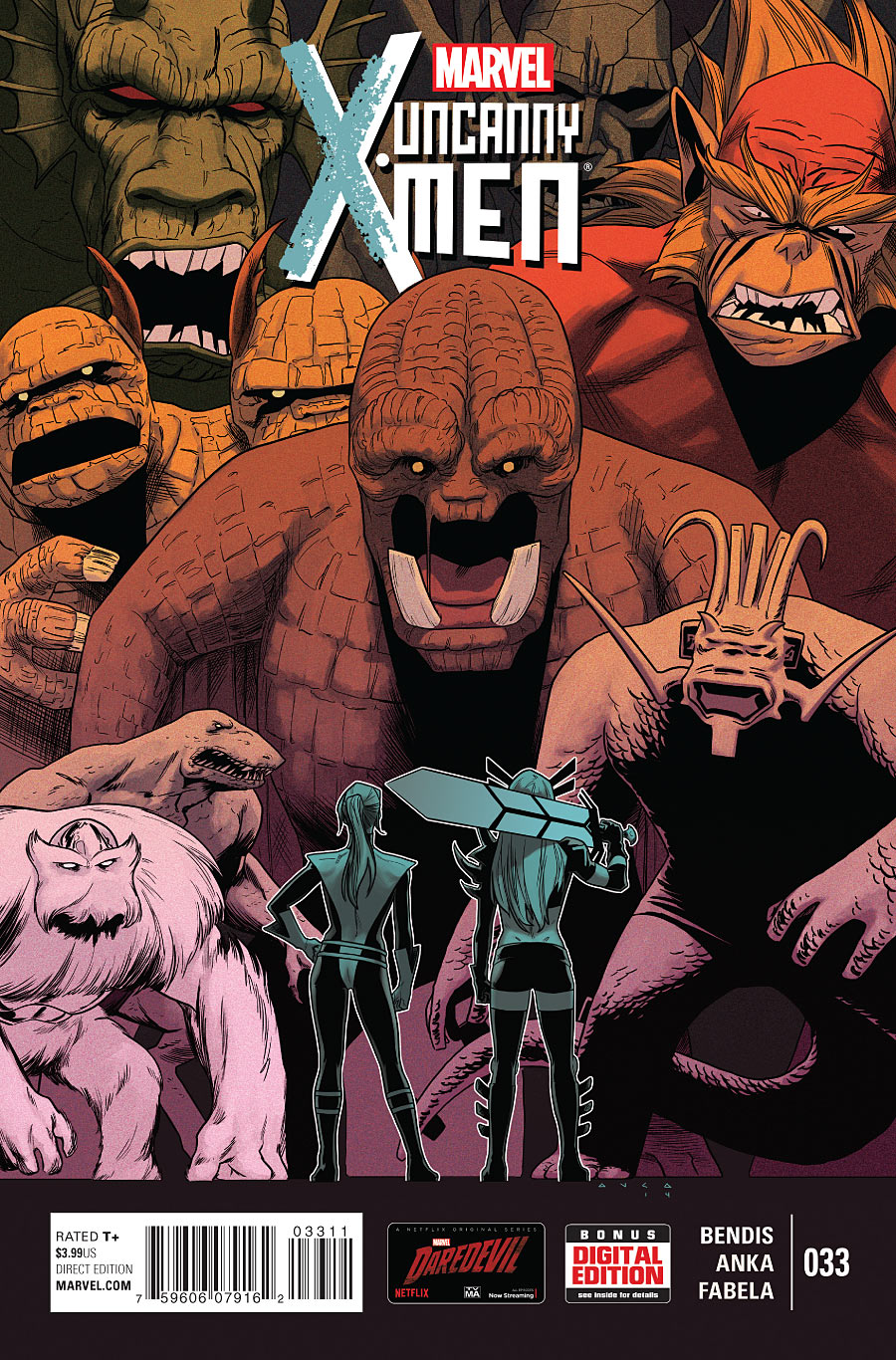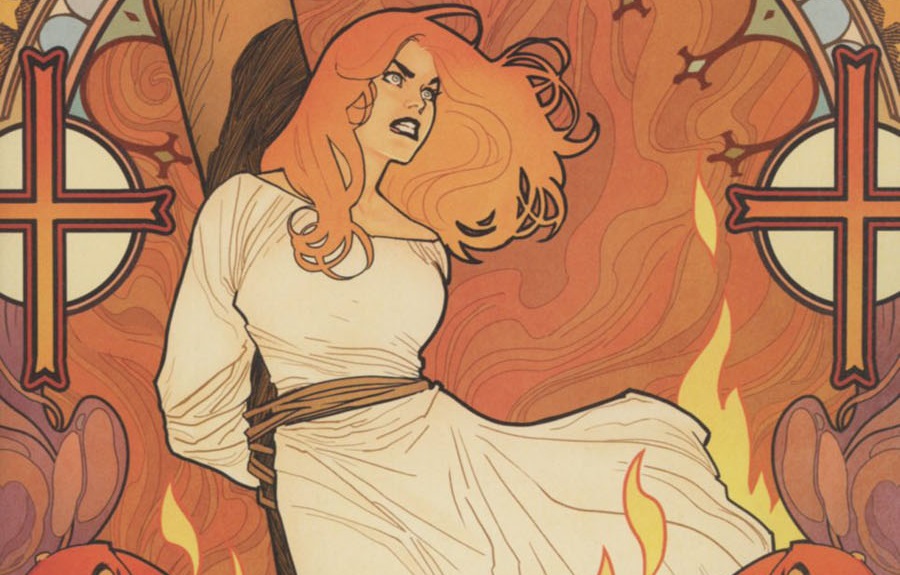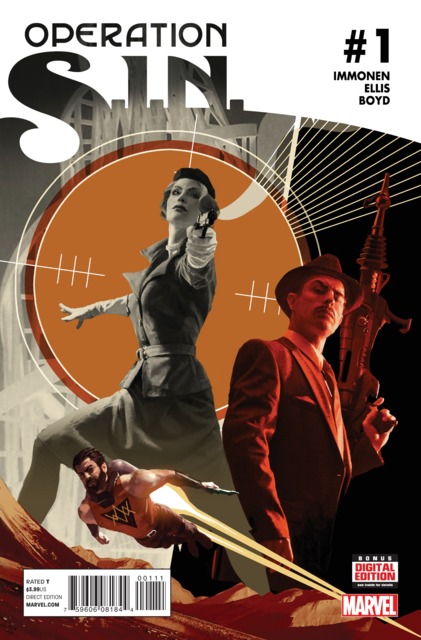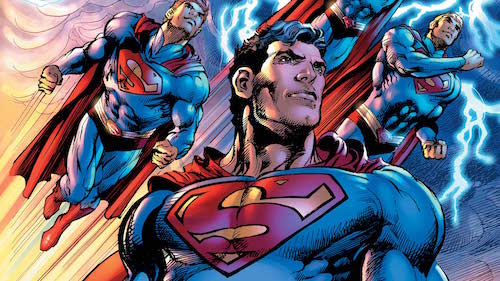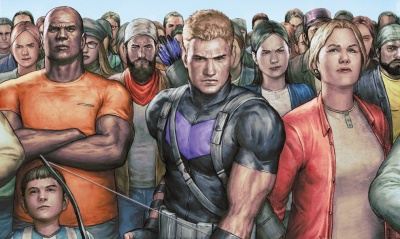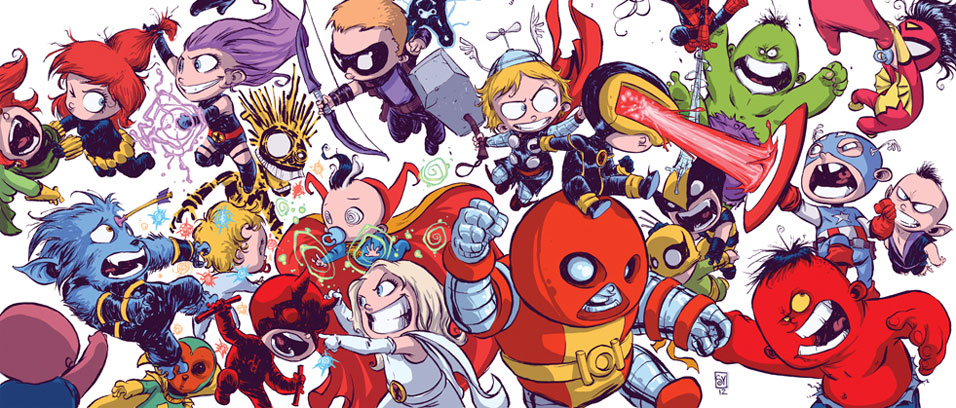By Carolyn Cocca and Anna Cocca Goodman
Two years ago this week, my daughter and I read Princeless, on the recommendation of Bob Reyer of Talking Comics. From the time Anna was born, I had wanted to share my pop culture loves with her but wasn’t sure where to start. When I was her age, I loved to play Star Wars and Superfriends with three boys who lived on my street. My Princess Leia and Wonder Woman always wore jeans. Today, I am a political scientist who teaches about civil rights, civil liberties, and the politics of gender, and who writes about superheroes and gender. Anna is a voracious reader who loves to play “queens” (because “princesses don’t have any power”), and her queen is always secretly a knight—in a big, fancy dress with armor and a sword.
Studies show that female characters are numerically underrepresented in children’s books, adults’ books, television shows, movies, and comics. Historically, female readers were just supposed to identify with male characters, and very few of those male characters were diverse in terms of class, gender, sexuality, race, ethnicity, age, religion, etc. Particularly before this past year, there were many, many comics that contained too few well-written female characters, too much sexualization of those female characters, and too much violence for Anna. She liked DC Superfriends, but didn’t like that Wonder Woman was the only female character. Her current favorites are My Little Pony, Scooby-Doo Team Up, Ms. Marvel, Bandette, and Princeless.
We both love Princeless and have read all three trade paperbacks and the new issues as well. Here, verbatim, is a conversation we had about the series. We hope it answers questions you might have about it, and show you why so many adults and kids love it.
Carolyn: We first read this book two years ago, and you liked it right away. And you still like it. Why? What’s different and special about Princeless?
Anna: Adrienne isn’t a fair-skinned princess and she doesn’t have blond hair and blue eyes like most princesses do, plus she has a pet dragon, and she’s really adventurous and she really cares about saving her sisters. They show her much stronger than her brother, and most of the time in princess stories the boys are stronger than the girls.
Then she meets a blacksmith, who’s a girl, and the blacksmith’s name is Bedelia. Bedelia figures out she’s Princess Adrienne and shows her the “Women Warriors Collection.” Adrienne finally gets Bedelia to realize that just because a woman is a woman, she doesn’t have to wear armor that shows her stomach. Bedelia and Adrienne get to know each other and be friends, and Bedelia meets Sparky [the dragon], and they escape from the shop which they burn down. Adrienne is like Rainbow Dash [her favorite My Little Pony], Bedelia is like Applejack, and Anjelica is like Rarity.
Carolyn: Do you remember that after reading this part, you wanted to create your own Warrior Women collection? Here are the outfits you drew, last year when you were seven [I show her this drawing.].
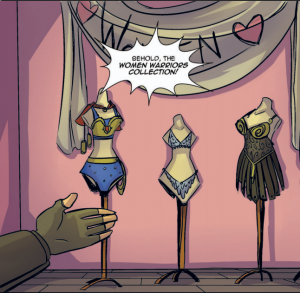
Anna: Yes! First I drew Bedelia’s that she made—the Diana, the Sonja!….Then I drew those. Let’s go make new ones! [We take a break to go draw new Warrior Women outfits.]
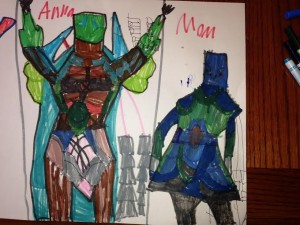
Carolyn: You asked at one point if there would be any Adrienne dolls. You have many knight dolls, but only one of them is a woman [whom Anna named Lady Goldenknight]. I know you wanted another besides Lady Goldenknight but there just aren’t any out there. So, I asked Jeremy Whitley on tumblr, and he replied very quickly that he would love to make Adrienne dolls, but it is really expensive. But you do have a Wonder Woman action figure that you don’t play with. Why is that?
Anna: I’m really more into Adrienne because she’s younger and Wonder Woman’s all supernatural and has superpowers. Adrienne is a regular girl who meets a regular blacksmith, Bedelia and together they go to rescue the sisters. Wonder Woman usually works together as a team with all the male superheroes. I like that Adrienne and Bedelia form their own girl team and work together.
Carolyn: If you were to describe Princeless to your friends, what would you say?
Anna: It depends on who I’m talking to. If it’s [her tomboy friend who also loves to dress up], I’d say, she’s a princess, and she is really cool and she’s riding on a dragon and all that kind of stuff. But if it were [her blond and blue-eyed older cousin], I would say it’s really cool because she’s not blond and blue-eyed, she’s not waiting for a prince to rescue her, she isn’t just standing around in a tower all day. If it were [her Harry Potter-loving friend], I would say it’s kind of supernatural because there are dragons and there are lots of adventures, and a royal family.
Carolyn: What about your friends who are boys?
Anna: There aren’t that many boy characters and Devin, the only son, is shown as kind of weak. I think boys might like that there isn’t a prince and princess kissing. The boys in my class don’t like kissing. They think it’s disgusting and gross.
I don’t think boys like it when girls are main characters. I don’t always like it when boys are main characters.
I like girl main characters so I can compare myself to the main character and put myself in her place.
I think that Adrienne is exciting to me because mostly even when girls rescue themselves it’s usually a blond blue-eyed girl and that’s not that common even though that’s who I am, and I will not be rescued by a prince! I’d escape from the tower with a sword and a grappling hook!
Carolyn Cocca is Associate Professor in the Department of Politics, Economics, and Law at the State University of New York, College at Old Westbury. She is the author of Jailbait: The Politics of Statutory Rape Laws in the United States (SUNY Press), and most recently, of “The Brokeback Project: A Quantitative and Qualitative Analysis of Portrayals of Women in Mainstream Superhero Comics, 1993-2013”, “Negotiating the Third Wave of Feminism in Wonder Woman” and “Re-booting Barbara Gordon: Batgirl, Oracle, and Feminist Disability Theories” in ImageTexT. She teaches courses on U.S. politics, civil liberties and civil rights law, and the politics of gender and sexuality.



